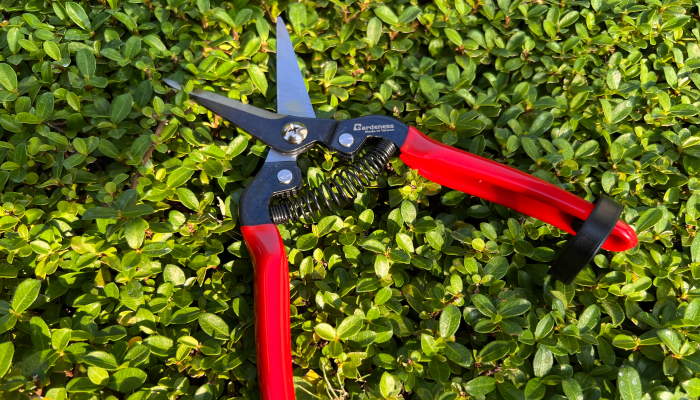
The Hand Pruning Saws - Best Guide and Tips to Use it
The hand-pruning saw is one of the oldest tools used in carpentry and woodworking. It's a tool that's been around for centuries, yet it still has a vital role in creating beautiful furniture or decor. But what exactly is a punting saw, and how do you use it?
In this blog post, we will explore the different types of hand-pruning saws, their uses, and tips on how to get the most out of your sawing experience. Whether you're a professional woodworker looking for guidance or just starting out with some DIY projects, this post will give you all the information you need to get started with punting saws.

What are the Hand Pruning Saws?
A hand pruning saw is a small, handheld saw used to make precise cuts in wood. It is also known as a coping saw or jeweler's saw. The blade of a hand pruning saw is held in place by a frame, and the frame is held in place by the user's hand. The structure has the blade under tension, allowing it to make very straight, clean cuts.
How to Use a Pruning Saws?
Here are some tips on how to use a pruning saw:
- Always use sharp blades. It will help you avoid tear-out and achieve a clean cut.
- Use a fence when cutting long or wide boards. It will help you keep the cuts straight.
- Make sure to secure the board before cutting. It will prevent the board from moving and ruining your cut.
- Take your time when making cuts. Rushing will only lead to mistakes.
- Use a dust catcher when cutting to avoid breathing in dust particles.
How to Choose the Right Hand Pruning Saws
Here are some tips to help you choose the best hand-pruning saw for your project:
Decide the material you will be cutting:
Different types of hand-pruning saws are designed for different materials. A standard crosscut or rip saw will suffice if you only cut wood. However, if you need to cut through metal or other more challenging materials, you will need a specialized hand-pruning saw.
Consider the size of the project:
The size of your project will also dictate the type of hand-pruning saw you need. A smaller handheld saw will do the trick if you only need to make minor cuts. However, if a large project requires more extended amounts, you will need a larger-sized hand pruning saw.
Determine the level of precision:
Some hand-pruning saws are more precise than others. You must invest in a higher-quality saw if your project requires exact cuts. On the other hand, if precision is less critical, you can save money by choosing a less expensive model.
What are the Different Types of Pruning Saws?
Here are some of the most common pruning saws you'll encounter:
- Coping saw: A coping saw has a thin, flexible blade ideal for making intricate cuts in wood. Woodworkers often use it to create decorative profiles on furniture and mouldings.
- Keyhole saw: As the name suggests, a keyhole saw is designed to cut wood holes. It has a long, thin blade with a small handle.
- Japanese pull saw: A Japanese pull saw is similar to a coping saw but has a thinner blade that is ideal for making exact cuts. Japanese woodworkers often use it for creating traditional joinery.
- Hacksaw: A hacksaw is a versatile tool that can cut many different materials, including wood, metal, and plastic. It has a coarse, toothed blade.
Tips on Maintaining Your Pruning Saws
Here are a few tips on how to keep your pruning saws in tip-top shape:
- Keep the saw blades sharp: Dull saw blades will not only make your cuts less accurate, but they can also damage the workpiece. Use a file or sharpening stone to maintain the sharpness of the blades regularly.
- Keep the teeth clean: Over time, the teeth on your pruning saw can become clogged with dust and debris. It can affect both the accuracy of your cuts and the lifespan of the blades. Use a toothbrush or compressed air to clean the teeth after each use.
- Oil the moving parts regularly: The moving parts on your pruning saw must be lubricated to prevent rust and wear. Periodically apply a few drops of oil to these parts and wipe away any excess with a cloth.
- Store your pruning saws properly: When not in service, they should store them in a dry, safe place where they will not be subject to excessive heat or cold.

Conclusion
To sum up, hand pruning saws are an excellent tool for any woodworking project and can make precise cuts. They are relatively simple to use, but it is essential to take the time to familiarize yourself with the different parts of the saw, how they work together and what types of blades you should use for specific projects. With these tips, we hope you understand better how to use your hand-pruning saw safely and effectively to get the most out of your woodworking experience. Moreover, if you are thinking of experiencing these shears, Gardeness. co is one of the best sites for professional garden tools.